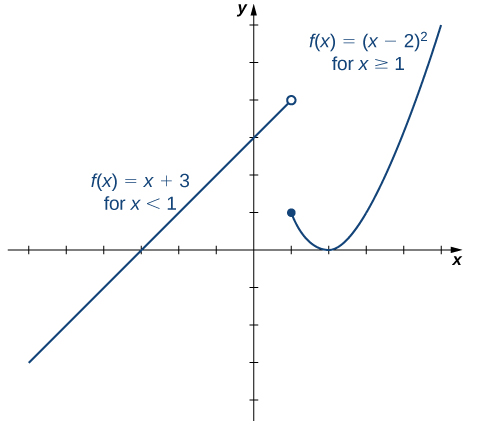| << Chapter < Page | Chapter >> Page > |
Find the domain for each of the following functions: and
The domain of is The domain of is
Thus far, we have discussed algebraic functions. Some functions, however, cannot be described by basic algebraic operations. These functions are known as transcendental functions because they are said to “transcend,” or go beyond, algebra. The most common transcendental functions are trigonometric, exponential, and logarithmic functions. A trigonometric function relates the ratios of two sides of a right triangle. They are (We discuss trigonometric functions later in the chapter.) An exponential function is a function of the form where the base A logarithmic function is a function of the form for some constant where if and only if (We also discuss exponential and logarithmic functions later in the chapter.)
Classify each of the following functions, a. through c., as algebraic or transcendental.
Sometimes a function is defined by different formulas on different parts of its domain. A function with this property is known as a piecewise-defined function . The absolute value function is an example of a piecewise-defined function because the formula changes with the sign of
Other piecewise-defined functions may be represented by completely different formulas, depending on the part of the domain in which a point falls. To graph a piecewise-defined function, we graph each part of the function in its respective domain, on the same coordinate system. If the formula for a function is different for and we need to pay special attention to what happens at when we graph the function. Sometimes the graph needs to include an open or closed circle to indicate the value of the function at We examine this in the next example.
Sketch a graph of the following piecewise-defined function:
Graph the linear function on the interval and graph the quadratic function on the interval Since the value of the function at is given by the formula we see that To indicate this on the graph, we draw a closed circle at the point The value of the function is given by for all but not at To indicate this on the graph, we draw an open circle at


Notification Switch
Would you like to follow the 'Calculus volume 1' conversation and receive update notifications?